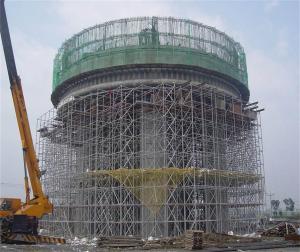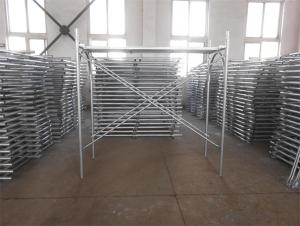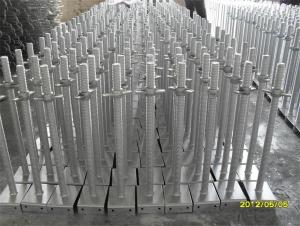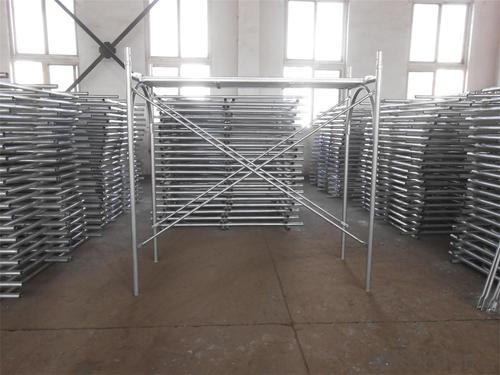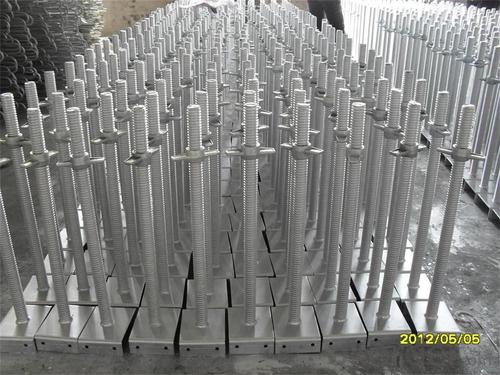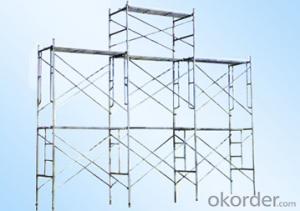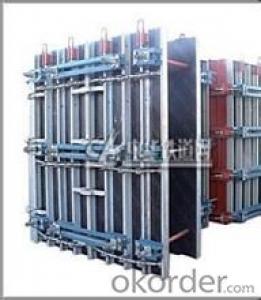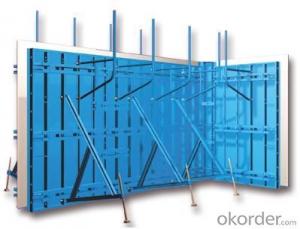Ring-Lock Scaffolding , Door Scaffolding , Tower Scaffolding with Hot or Cold Galvanized Surface
- Loading Port:
- Shanghai
- Payment Terms:
- TT OR LC
- Min Order Qty:
- 1000 m²
- Supply Capability:
- 100000 m²/month
OKorder Service Pledge
OKorder Financial Service
You Might Also Like
1.Structure of Ring lock Description
Ringlock Scaffolding system is the most popular used Scaffolding system in the world.It will greatly reduce the cost because of the following advantages
Packaging & Delivery
Packaging Details:
Pallet or bag or upon client's request
Delivery Detail:
35days
2.Main Features of Ringlock
It will greatly reduce the cost because of the following advantages
1)Using less pipes
2)Easy to install
3)It can be used again and again for nearly 20years
3.Ring lock product pictures:
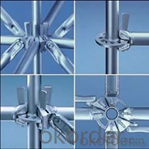
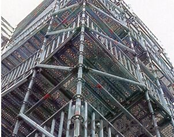
4.Ringlock Product Description
Type: ringlock scaffolding diagonal Brace
specification : Ø48.3×3.20
material:: steel Q235
Finished: Hot DIP galvanized, painted
Diagonal length(m) :Weight(kg)
0.9m * 1.25m 6.28
1.25m * 2.7m 11.45
5.FAQ
We have organized several common questions for our clients,may help you sincerely:
1)How about your company?
CNBM International Corporation, China National Building Materials (Group) Corporation, is one of the largest companies in China building material equipment industry, Our formwork and scaffolding are largely used in both domestic and all over world;
2)How many Scaffolding your company have?
Here comes our 5 types of Scaffolding systems:
- Cup lock Scaffolding(C-Lock Scaffolding)
- Ring lock Scaffolding
-Kwistage Scaffolding
-H-frame Scaffolding
-ID15 Scaffolding Tower, this type Scaffolding is the most widely used in construction, such like bridge.
3)How long can we receive the product after purchase?
Lead time is about 30days after getting the signed PI and deposit.
- Q: Can steel frame formwork be used for post-tensioned concrete structures?
- Yes, steel frame formwork can be used for post-tensioned concrete structures. Post-tensioning is a technique used to reinforce concrete structures by applying tension to steel cables or bars after the concrete has hardened. Steel frame formwork provides a strong and durable framework for pouring and shaping the concrete during construction. It can easily accommodate the additional forces and requirements of post-tensioning. The steel frame formwork, along with the post-tensioning elements, work together to create a structurally sound and reinforced concrete structure.
- Q: What are the different types of formwork pins used with steel frame formwork systems?
- There are several types of formwork pins commonly used with steel frame formwork systems, including flat head pins, wedge pins, pin and wedge systems, and snap tie pins. Each type serves a specific purpose in securely connecting and aligning the formwork panels, ensuring stability and accuracy during the concrete pouring process.
- Q: Can steel frame formwork be used for both precast and cast-in-place construction?
- Steel frame formwork is a versatile and durable system that can be utilized in both precast and cast-in-place construction. In precast construction, it is employed to create molds for the precast concrete elements, which are then produced off-site and delivered to the construction site for installation. On the other hand, in cast-in-place construction, the steel frame formwork is used to shape and mold the concrete directly on-site. The formwork is assembled and positioned at the desired location, after which the concrete is poured into the mold. Once the concrete has hardened and cured, the formwork is removed, leaving behind the desired structure. The use of steel frame formwork offers numerous advantages in both construction methods. It provides exceptional strength and stability, ensuring that the concrete is properly contained and supported throughout the pouring and curing process. Furthermore, the steel frame formwork can be easily adjusted and reused, resulting in efficient and cost-effective construction. Additionally, the smooth and rigid surface of the formwork guarantees high-quality finishes on the concrete structures. In conclusion, steel frame formwork is a dependable and adaptable solution for efficient and high-quality construction in both precast and cast-in-place methods.
- Q: How does steel frame formwork accommodate for changes in concrete thickness?
- Steel frame formwork can accommodate changes in concrete thickness by using adjustable elements such as adjustable steel walers or props. These elements can be adjusted to the required height, allowing for variations in concrete thickness. Additionally, steel frame formwork can also have removable panels, allowing for easy modification and adjustment if the concrete thickness needs to be changed during the construction process.
- Q: What is steel wood formwork?
- 3, can be repeatedly used.4, after the release effect is very good.
- Q: Can steel frame formwork be used in projects with limited construction site power supply or electrical access?
- Steel frame formwork is a versatile and flexible system that can be used in construction projects with limited power supply or electrical access. Unlike traditional formwork systems that require electricity for operations, steel frame formwork can be manually operated. The design of steel frame formwork focuses on simplicity and ease of use. It consists of steel frames, cross braces, and plywood panels that can be easily assembled and disassembled by hand. This makes it ideal for projects in remote areas or sites with limited power supply. Furthermore, the installation and removal of steel frame formwork do not require power tools. Basic hand tools like hammers, wrenches, and screwdrivers can be used to adjust and secure the formwork. This eliminates the need for electrical equipment and reduces reliance on power supply. Additionally, steel frame formwork is durable and strong, making it capable of withstanding challenging construction conditions. It can be reused multiple times, reducing the need for frequent replacements and saving costs. To sum up, steel frame formwork is a reliable and efficient solution for construction projects with limited power supply or electrical access. Its manual operation, durability, and flexibility make it suitable for various site conditions, ensuring smooth construction processes without the need for electricity.
- Q: How does steel frame formwork handle different types of formwork curing techniques?
- Steel frame formwork is a versatile and durable system that can effectively handle different types of formwork curing techniques. The steel frame provides excellent support and stability, allowing for various curing methods to be implemented. One common technique is the traditional wet curing method, where the formwork is kept damp with water to facilitate proper hydration of the concrete. Steel frame formwork is designed to withstand the moisture and pressure associated with wet curing. The steel frames are typically coated with anti-corrosion materials, ensuring their longevity and resilience against water exposure. Another technique is the use of curing compounds or membranes, which are applied to the formwork surface to create a barrier that retains moisture and promotes proper curing. The smooth surface of the steel frame formwork allows for easy application and adherence of these compounds. The steel frames also provide a solid base for the curing compounds to bond with, ensuring a strong and effective curing process. Additionally, steel frame formwork can accommodate the use of insulating materials for curing, such as thermal blankets or foam boards. These materials are placed on the formwork surface to retain heat and promote a controlled curing environment, especially in colder climates. The steel frame formwork provides a sturdy structure to support the weight of the insulating materials and ensures proper insulation throughout the curing process. Overall, steel frame formwork is well-suited to handle different types of formwork curing techniques. Its strength, durability, and resistance to moisture make it a reliable choice for various curing methods. Whether it is wet curing, curing compounds, or insulation, the steel frame formwork system can effectively support and facilitate the curing process, resulting in high-quality and durable concrete structures.
- Q: What are the different types of formwork ties used with steel frame formwork?
- With steel frame formwork, various formwork ties are utilized to ensure stability and strength in the system. Each tie serves a distinct purpose in achieving this goal. 1. Snap Ties: Among the most frequently employed formwork ties, snap ties establish a robust connection between formwork panels. They can be swiftly and effortlessly installed, and easily removed once the concrete has cured. 2. Flat Ties: Similar to snap ties, flat ties possess a flat end instead of a loop. They are employed when a smooth finish on the concrete surface is desired, as they leave minimal marks after removal. 3. She-bolts: She-bolts are used to connect formwork panels together. Designed with a threaded end, they can be effortlessly screwed into the formwork panels, ensuring a secure connection. 4. Wing Nuts: In conjunction with she-bolts, wing nuts are utilized to secure the formwork panels in place. These nuts have two wings that can be turned by hand, facilitating quick and easy installation and removal. 5. Tie Rods: Tie rods anchor the formwork system to the ground or other structural elements. Typically made of steel, they have threaded ends, enabling easy connection and adjustment. 6. Cone Anchors: Cone anchors secure the formwork system to the concrete structure. They consist of a cone-shaped anchor inserted into a pre-drilled hole in the concrete. The tie rod is then threaded into the anchor, establishing a strong and secure connection. 7. Form Anchors: Form anchors provide additional support and stability to the formwork system. Made of steel, they are inserted into pre-drilled holes in the formwork panels. The anchor is then secured in place with a nut and washer, creating a strong and rigid connection. These examples demonstrate the various formwork ties used with steel frame formwork. The choice of tie depends on factors such as desired finish, structural requirements, and the specific formwork system employed.
- Q: How does steel frame formwork handle the placement of reinforcement bars?
- Steel frame formwork is a versatile system that allows for easy handling and placement of reinforcement bars. The formwork is designed with pre-determined openings and slots, which provide convenient spaces for the positioning of reinforcement bars. These openings ensure accurate placement, alignment, and spacing of the bars, resulting in a sturdy and durable structure. Additionally, the steel frame formwork provides a stable and secure platform for workers to efficiently install the reinforcement bars, ensuring their proper integration with the formwork system.
- Q: What is steel frame formwork?
- Steel frame formwork, composed primarily of steel frames, is a construction formwork system utilized to shape and structure concrete. During the pouring and curing process of the concrete, the steel frames provide crucial support and stability. Made from high-quality steel, they possess the strength and durability necessary to withstand the weight and pressure of the concrete. The versatility and flexibility of steel frame formwork are widely recognized. Its ease of assembly and disassembly enables effortless transportation and reuse, making it a cost-effective alternative to traditional formwork systems. Additionally, it ensures a smooth and precise finish, guaranteeing high-quality construction. A significant advantage of steel frame formwork is its capability to accommodate complex and intricate shapes. The steel frames can be customized and adjusted to meet the specific requirements of each project, facilitating the construction of unique and innovative designs. Consequently, it is a popular choice for projects involving curved or irregular structures. Moreover, steel frame formwork boasts excellent safety features. These frames are designed to provide stability and prevent collapses or accidents during the construction process. Furthermore, they can withstand adverse weather conditions, rendering them suitable for both indoor and outdoor construction projects. In conclusion, steel frame formwork is a dependable and efficient system employed in concrete construction. Its strength, versatility, and safety features make it the preferred choice for numerous builders and contractors. Through the utilization of steel frame formwork, construction projects can be completed with precision, efficiency, and durability.
Send your message to us
Ring-Lock Scaffolding , Door Scaffolding , Tower Scaffolding with Hot or Cold Galvanized Surface
- Loading Port:
- Shanghai
- Payment Terms:
- TT OR LC
- Min Order Qty:
- 1000 m²
- Supply Capability:
- 100000 m²/month
OKorder Service Pledge
OKorder Financial Service
Similar products
Hot products
Hot Searches
